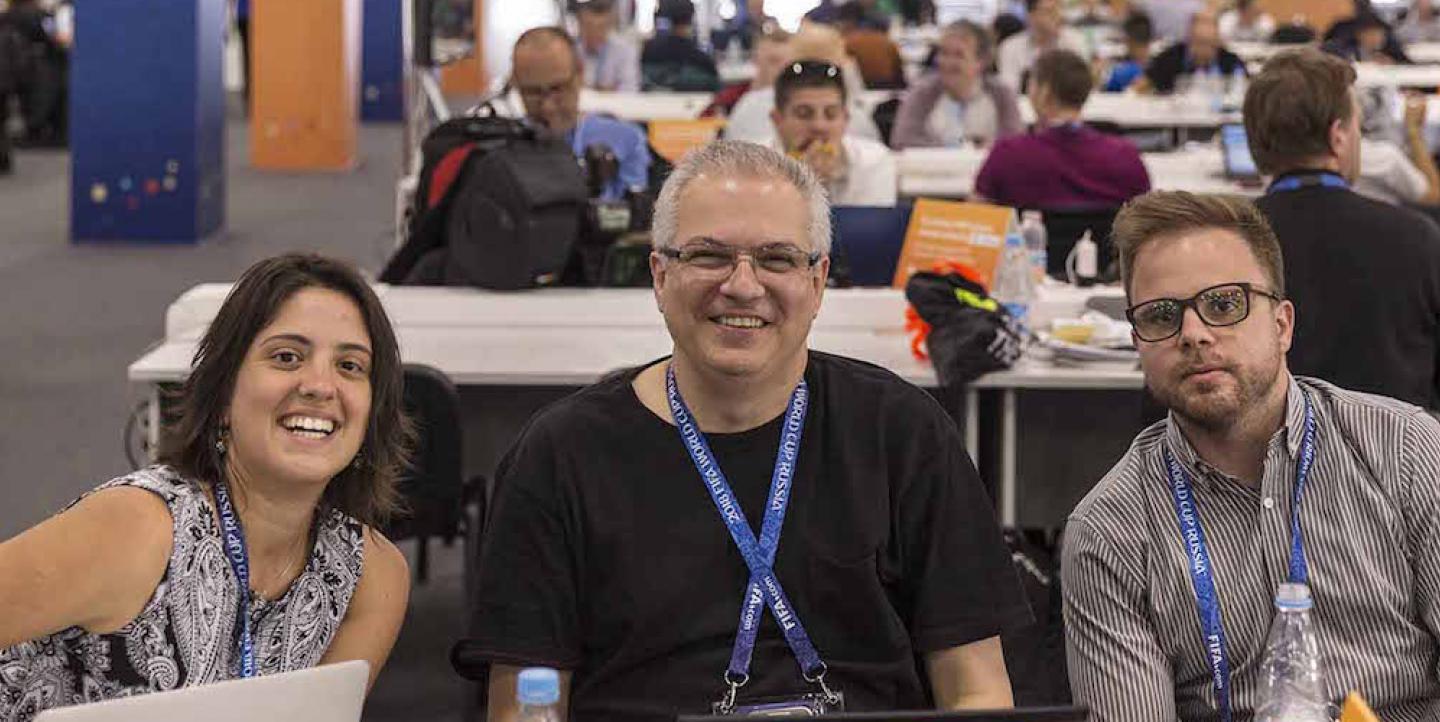Despite being in the center of the action covering the 2018 FIFA World Cup, journalist Camila Mattoso spoke with IJNet after an eventful day in which Neymar, Brazil's soccer star, limped out after 15 minutes of training.
This is not the first World Cup for Mattoso, who is following the Brazilian team for the newspaper Folha de S. Paulo. The sports reporter also covered the 2014 World Cup in Brazil, as well as other major sporting events, including the 2014 Olympic Games in London and the 2016 Olympic Games in Rio de Janeiro. She also wrote the book Tite, profiling the Brazilian coach.
Since 2016, she has covered politics in Brasília but returned to sports journalism to cover the 2018 FIFA World Cup.
The only woman on her team, Mattoso talked about her experience covering two World Cups and the lack of diversity covering sports in Russia.
IJNet: How do you prepare to cover the World Cup?
Mattoso: There are two mandatory ways to prepare for World Cup coverage. This will, of course, depend on what role a reporter will play during the event. In my case, for example, when I learned that I would be in Russia covering the Brazilian team, the first thing I did was start exhaustive research on the team, coaching staff, their opponents and the places where the games and training will take place. Being well informed is the first step to knowing where the news is.
For me, the second thing was trying to map out the people involved with the team. I started looking for them before the trip, which is important because they're the ones I'm going to need to look for when I am reporting. For example, if Neymar gets hurt and you’ve never talked to the team's doctor before, it will be unlikely for him to meet you and even more unlikely for him to give you information about the player.
How was your experience covering the World Cup in 2014?
For the 2014 World Cup, I spent 50 days in Belo Horizonte, covering games at the Mineirão stadium and the training sessions of the teams playing there (Argentina, Chile and Uruguay). I was also responsible for reporting on the political aspects of the Brazilian Soccer Confederation (CBF), which we call coverage of cartolas (leaders).
I learned a lot by observing the work of other journalists who had already reported on several World Cups. One thing I learned is that, in this kind of coverage, there will be periods of calm, but what is important is to be prepared for the moments of crisis. That was the case of the 7-1 game [Brazil's loss against Germany].
What are the biggest challenges in this type of coverage and how do you deal with them?
The biggest challenge is being able to tell stories that are different from other journalists. The news is mostly about the results of the games and what takes place during training. That is why preparation is so important. It will make a difference to be well-informed and have established sources. Another huge challenge covering the Brazilian team is to always maintain a critical eye, even though it upsets the CBF, players and fans who want the so-called "bad" news to be left uncovered in order to avoid disturbing the team's performance. We must report the news accurately, whether it is good or bad.
Do you use any digital tools or apps?
I use Evernote for annotations, including as a database. I highly recommend it.
You've been harassed for being a woman journalist covering sports. Have you noticed any improvement after the #MeToo movement and similar campaigns in Brazil such as #ChegaDeAssédio and #DeixaElaTrabalhar?
I think there is certainly an improvement in sports reporting, whether it is because there is more awareness of the pervading machismo or because of greater monitoring. A top officer, for example, may continue to think it's ok to hit on female journalists, but now he says he does not do it anymore because he is being monitored. If this means he doesn't do it anymore, it's a better environment to work in. However, there will ideally be a day when he realizes why [hitting on women reporters] is not cool.
It's still scary to arrive in Russia and see a dismal number of women covering the event.
Follow Camila Mattoso's coverage on Twitter
Main image of the Folha team (left to right) Camila Mattoso, Sérgio Rangel and Diego Garcia, by Eduardo Knapp.


